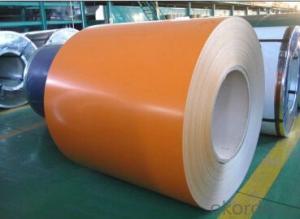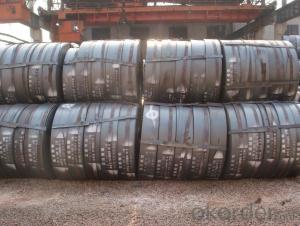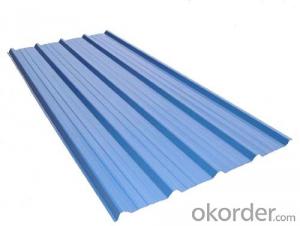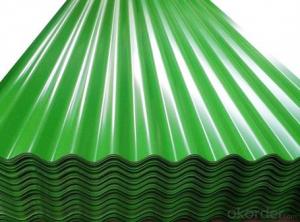COLORED CORRUGATED METAL SHEET FOR ROOFING
- Loading Port:
- Tianjin
- Payment Terms:
- TT OR LC
- Min Order Qty:
- 50 m.t.
- Supply Capability:
- 2000 m.t./month
OKorder Service Pledge
OKorder Financial Service
You Might Also Like
Specification
Product Brief Introduction
COLORED CORRUGATED STEEL SHEET FOR ROOFING
--- Corrosion resistance: Pre-coated steel offers excellent corrosion resistance achived through continuous hot DIP galvanization and corrosion resistant primer/polyester coating. Protection is achieved when zinc and steel are together in the presence of moisture; The zinc protects the steel by galvanic action
Product Features
. Traditional aesthetics outlook
. Suitable for new house or renovation.
. Less joints, watertight
. Long life service
. Tedun also provide relative ridge cap, fasteners and other accessories
Product Specification
Standard:ASTM, GB,JIS,JIS G3302 ASTM 755 EN10169
Grade: DX51D CGCC CS
Thickness: 0.13mm~3.0mm,
Width: 1250,600-1250mm
Coil weight:3-12 MT
Coil ID:508/610mm
Chemical composition:
C | Si | Mn | Cr | Ni | P | S |
0.150 | 0.476 | 11.231 | 12.50 | 0.900 | 0.039 | 0.010
|
FAQ
How long will we receive the goods ?
45days after receiving workable L/C
how do you control the quality ?
we have our own quality control department ,we will arrange QC person to see the production line ,when goods finish ,before shipment ,our QC person will check the quality as per our test report request ,if the goods is ok ,then we issue the test report ,and we allow the goods shipping ,otherwise will not allow ship the goods.
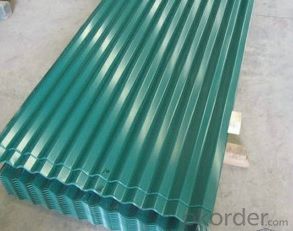
- Q: Are steel strips suitable for making hinges?
- Indeed, hinges can be made using steel strips. Steel, being a robust and long-lasting substance, has the ability to endure substantial loads and repetitive motions, rendering it an exceptional option for constructing hinges. By shaping, bending, and welding steel strips, one can fashion hinges with the desired design, ensuring stability and seamless operation. Furthermore, steel exhibits resistance towards corrosion and can be treated with diverse coatings to amplify its durability. In summary, steel strips are a dependable and frequently employed material for manufacturing hinges across a broad spectrum of applications such as doors, cabinets, and machinery.
- Q: How are steel strips shaped into specific profiles?
- Roll forming is the name given to the method by which steel strips are transformed into specific profiles. This process involves the continuous bending of the steel strip as it passes through a series of rollers. Each roller is designed to gradually shape the strip into the desired profile. To begin the process, a flat steel strip is fed into the roll forming machine. The strip then moves through a series of specially designed rolls, also known as forming stations. These rolls, located both at the top and bottom of each station, are positioned in a way that allows them to gradually bend the strip into the desired shape. Throughout the process, the strip is guided and supported by various components, such as side guides and entry and exit guides. These components ensure that the strip remains in the correct position and orientation as it is being shaped. The rolls in each forming station are carefully crafted to match the desired profile of the end product. Typically, these rolls are made from a hardened material, like tool steel, to withstand the high pressures and forces involved in the bending process. They are also often designed with grooves or contours that correspond to the shape of the profile being formed. In addition to the rolls, the roll forming machine may also include other components, like pre-punching or pre-cutting stations. These stations can be used to create holes or cutouts in the strip as it is being shaped. This simultaneous operation of multiple tasks saves time and increases efficiency. Overall, the roll forming process allows for the precise and consistent shaping of steel strips into specific profiles. It is a versatile and efficient method widely used in industries such as construction, automotive, and manufacturing, where customized metal profiles are needed for various applications.
- Q: How are steel strips used in the textile industry?
- Steel strips are commonly used in the textile industry for various purposes such as reinforcing fabrics, providing strength and stability to garments, and creating structured elements in clothing and accessories. Additionally, they are used in textile machinery for guiding and supporting fabrics during the manufacturing process.
- Q: What are the different methods of heat treatment for steel strips?
- There are several different methods of heat treatment for steel strips, each serving different purposes and achieving different results. Some of the most common methods include: 1. Annealing: This process involves heating the steel strips to a specific temperature and holding it at that temperature for a period of time, followed by controlled cooling. Annealing helps to relieve internal stresses, improve machinability, and enhance the overall ductility of the steel. 2. Quenching: Quenching is a rapid cooling process that involves immersing the steel strips in a quenching medium, such as oil or water, to achieve high hardness and strength. This method is commonly used for hardening the steel, making it suitable for applications that require wear resistance. 3. Tempering: Tempering is performed after quenching and involves reheating the steel strips to a specific temperature, followed by controlled cooling. This process helps to reduce the brittleness of the steel and improve its toughness, while maintaining an optimal balance of hardness and strength. 4. Normalizing: Normalizing is similar to annealing, but the cooling process is done in still air instead of controlled cooling. This method is used to refine the grain structure of the steel, improve its mechanical properties, and enhance its machinability. 5. Case hardening: Case hardening is a surface hardening process that involves adding a high-carbon content layer to the steel strips. This is achieved by heating the steel in the presence of a carbon-rich material, followed by quenching and tempering. Case hardening provides a hard outer layer that is wear-resistant, while maintaining a tough and ductile core. 6. Induction hardening: Induction hardening is a localized heat treatment method that involves heating specific areas of the steel strips using high-frequency induction heating. This results in a rapid quenching of the heated areas, leading to increased hardness and wear resistance. 7. Stress relieving: Stress relieving is a heat treatment process that involves heating the steel strips to a specific temperature and holding it there for a period of time, followed by slow cooling. This method is used to reduce residual stresses in the steel, which can improve dimensional stability and prevent distortion or cracking during subsequent machining or use. These are just a few of the different methods of heat treatment for steel strips. The choice of method depends on the desired properties and characteristics required for the specific application of the steel.
- Q: How are steel strips protected against magnetic interference?
- Steel strips can be protected against magnetic interference by applying a thin layer of non-magnetic material or coating, such as a polymer or ceramic, on the surface of the strips. This layer acts as a shield, preventing external magnetic fields from affecting the steel strips.
- Q: How are steel strips used in the manufacturing of storage tanks?
- Steel strips are used in the manufacturing of storage tanks as they provide strength, durability, and corrosion resistance. These strips are formed into specific shapes and welded together to create the tank's structure. Additionally, steel strips can be coated with protective layers to prevent rusting and enhance longevity, ensuring the tank's reliability and safety for storing various substances.
- Q: How are steel strips used in the production of metal enclosures?
- Steel strips are an essential component in the production of metal enclosures due to their versatility and strength. These strips are typically made from a high-quality steel alloy, such as stainless steel or galvanized steel, which provides excellent durability and resistance to corrosion. In the manufacturing process, steel strips are first cut into specific lengths and widths, depending on the dimensions of the metal enclosure being produced. These strips are then shaped and formed into the desired shape using various techniques, such as bending, folding, or welding. The steel strips serve as the main structural component of the metal enclosure, providing stability and rigidity to the overall structure. They are often used to create the frame or skeleton of the enclosure, acting as support for other components and ensuring that the enclosure maintains its shape and integrity. Moreover, steel strips are also used to create panels or walls of the enclosure. These panels are usually attached to the frame using welding or fastening methods, creating a solid and secure structure. The steel strips can be perforated or have holes to allow for ventilation or cable management, depending on the specific requirements of the enclosure. Additionally, steel strips can be coated or painted to enhance their appearance and provide additional protection against rust or other environmental factors. This allows the metal enclosures to be used in various industries, including electronics, telecommunications, and automotive, where aesthetics and durability are crucial. Overall, steel strips play a vital role in the production of metal enclosures by providing strength, stability, and versatility. They are an integral part of the manufacturing process, ensuring that the final product meets the required standards and provides a reliable and durable solution for housing various equipment and components.
- Q: What are the dimensions of a typical steel strip?
- The dimensions of a typical steel strip can vary depending on its intended use and industry standards. However, common dimensions for a steel strip include a width ranging from 0.5 inches to 36 inches and a thickness ranging from 0.003 inches to 0.25 inches.
- Q: How are steel strips used in the production of railway components?
- Steel strips are used in the production of railway components as they provide strength, durability, and flexibility. These strips are formed and shaped to create various railway parts such as rails, sleepers, and brackets. Additionally, steel strips are often used in the fabrication of train carriages and locomotive bodies, providing a sturdy framework for the overall structure.
- Q: What are the different grades of steel used for strips?
- There are several different grades of steel that are commonly used for strips in various industries. These grades are chosen based on the specific application and the desired properties of the strips. One of the most commonly used grades is carbon steel, which is known for its high strength and durability. Carbon steel strips are often used in applications where high tensile strength is required, such as in automotive components, construction materials, and machinery parts. Another commonly used grade is stainless steel, which is known for its corrosion resistance and aesthetic appeal. Stainless steel strips are often used in industries such as food processing, pharmaceuticals, and architecture, where resistance to rust and staining is crucial. High-strength low-alloy (HSLA) steel is another grade that is commonly used for strips. HSLA steel combines the strength and durability of carbon steel with improved formability, making it ideal for applications that require both strength and flexibility, such as in the manufacturing of automotive components and structural parts. Additionally, there are specialized grades of steel that are used for specific applications. For example, electrical steel is used in the production of transformers and electrical motors due to its magnetic properties. Tool steel is used for making cutting tools and dies due to its hardness and wear resistance. In summary, the different grades of steel used for strips vary depending on the specific requirements of the application. Carbon steel, stainless steel, HSLA steel, electrical steel, and tool steel are some of the commonly used grades, each offering different properties and advantages for various industries.
Send your message to us
COLORED CORRUGATED METAL SHEET FOR ROOFING
- Loading Port:
- Tianjin
- Payment Terms:
- TT OR LC
- Min Order Qty:
- 50 m.t.
- Supply Capability:
- 2000 m.t./month
OKorder Service Pledge
OKorder Financial Service
Similar products
Hot products
Hot Searches
Related keywords










